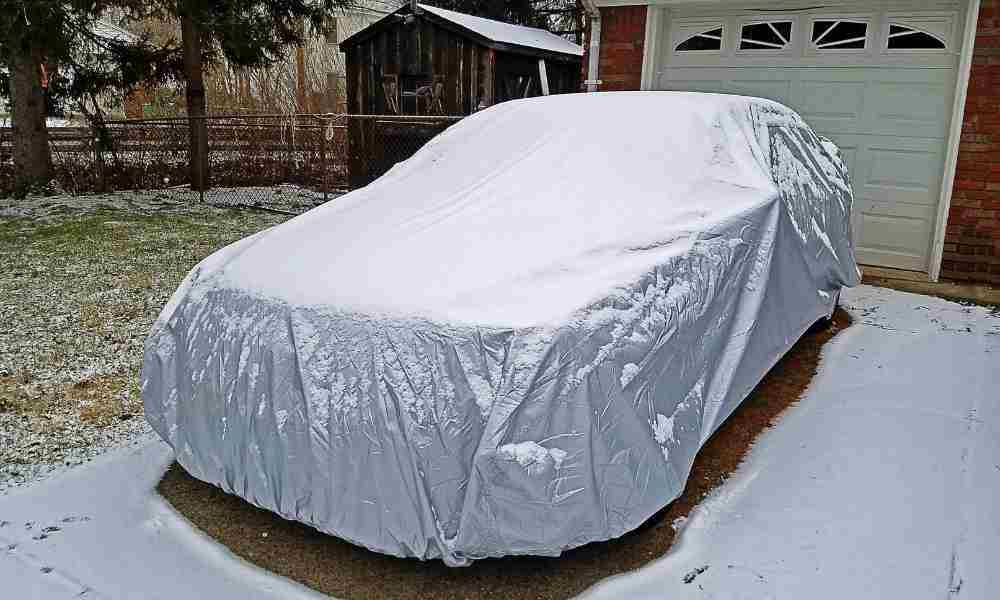It can be beautiful during the winter season, with its full-blown snow landscapes and a festive atmosphere. However, it also becomes a time when most problems arise for people, particularly for car owners. One of the main frustrating issues, when winter comes, car door locks get frozen. Imagine how you feel when you need to get to work or pick up your kids but find the locks on the car doors are frozen shut. We will cover some methods to unfreeze car door locks in the rest of this complete guide, preventive measures against the problem, and maintenance of locks during winter. So let’s dive into it.
Understanding the Issue
Why Car Door Locks Freeze
When the temperature drops below freezing, the moisture gets inside the locking mechanism and then turns into ice, making it difficult or sometimes impossible to insert or turn a key. The worst thing might happen when your car has been parked outside all night or during a snowfall.
Common Symptoms That You Have Frozen Locks
- I had some difficulty pushing the key into the lock.
- A key will not turn in the cylinder of the lock.
- The lock mechanism is tight, with no feeling of movement or give.
- Frost or ice might be visible around the lock.
Heating Equipments

Applying heat is one of the quickest ways to unfreeze your car door locks. Here are some excellent methods for doing that:
- Warm Key: Heat the key using a match or lighter. Pass the flame around the metal part of the key for several seconds. Do not make it too hot, though, and be careful not to burn your hand. The heated-up key has to be inserted into the lock, and you must attempt to turn it carefully.
- Hairdryer: One can take a hairdryer and blow some warm air directly onto the lock. This method will be very effective. However, it requires the user to have an electrical output from which it can obtain energy, and the user has to ensure that the car’s paint is not spoiled by the heat of the hairdryer.
- Portable Heater: You can target the lock with a portable heater to eliminate the ice. This makes the process a breeze if you have a portable heater that runs on batteries or a power outlet nearby.
Chemical de-icers

Chemical de-icers are formulated to dissolve ice rapidly and car unfreeze your car door locks in such a short time. These products are found in most automotive outlets. To use a de-icer:
- Spray into the lock.
- Wait for a few minutes for the solution to act.
- Try to insert the key and turn it gently.
Some popular de-icer brands are Prestone, CRC, and Heet.
Using lubricants will prevent the lock from freezing again after you’ve used the de-icer to melt the ice. Graphite-based lubricants work particularly well because they do not absorb moisture. You can use :
- Place the nozzle inside the lock.
- Touch it a bit with spray lubrication.
- Put in your key and turn it to spread the lubricant all around the lock.
General TECHNIQUE
- Rocking Motion: Insert the key into the lock and gently twist it back and forth. This may just help break up the ice within the mechanism.
- Tapping: Tap the lock lightly with a blunt object to shake off any ice. Take care not to damage the lock or the surrounding area.
Preventive Measures
cover your car

Installing a cover on your automobile dramatically reduces the chances of your door locks from freezing. These are:
- Car Covers: It would be wise to invest in high-quality, properly fitting car covers to protect the vehicle from snow and ice.
- Freeze Caps: Cover up the keyholes with small caps or tape whenever a freeze approaches. This is very simple, but it has a significant impact on protecting the lock from ice.
Regular Maintenance

Protect your locks so they don’t freeze up. Keep your locks cleaned and lubricated for sound, smooth operation.
While the weather stripping and sealant application
Proper weather stripping around your doors will keep moisture out of the locks. The use of silicone sealant will keep out any further access of water around the locks.
Human strategies
And now, where you park your car can make an awfully big difference. A few tips include :
- Garage Parking: If possible, park your car in a garage to protect it from the elements.
- Sheltered Areas: Seek out parking under cover or closer to buildings that can help block the wind to avoid excessive ice formation.
DIY Practices and Home
Human Hand Sanitizer
Since hand sanitizer comprises primarily alcohol, it can melt ice. The following steps should be taken to use this
- Apply a small amount of hand sanitizer to the key.
- Put the key into the lock and carefully turn. 3. Repeat until the lock turns with ease.
I TWIN C
A typical case in point is petroleum jelly, which guards moisture from entering the lock. Just dab a little onto the key and then place it inside the lock to put some on the inside.
Hot Water

If ice has made the lock jam, there are chances that it might melt the ice by pouring boiling water over it. Be extremely careful because it might result in swift temperature changes and create cracks in the glass or destroy the mechanisms. This method should be used for an emergency only.
Hairdryer technique
As said before, a hairdryer helps thaw a frozen lock. Be sure there is an electrical point to plug in the hairdryer, and take care with exposure time so as not to spoil it.
Help with Professionals and Sophisticated Tools
When to Call a Professional
It should be left to a professional locksmith if the lock remains frozen after all the tricks. They have appropriate tools and knowledge of how to deal with frozen locks without inflicting further damage.
High-Tech De-Icing Products
More severe cases can be resolved using de-icing products with more advanced features, commonly higher components, and chemicals meant to work in icy conditions.
Replacement Locks
A lock that often freezes could signal the right time to change the lock altogether. Present-day locks are made to endure ice and may have extra ways of not storing moisture in the lock.
Cleaning and Maintenance
Clean locks occasionally to remove dirt and debris that may retain moisture. Use a gentle cleaning solution and a soft brush to avoid spoiling the locking mechanism.
Essential Maintenance Products
Purchase high-quality de-icers, lubricants, and other maintenance products for best performance. Consult your car’s manual or a professional for recommendations.
Frozen car door locks are a common winter problem caused by moisture in the lock mechanism. Immediate remedies include using heat sources, chemical de-icers, and lubricants. Preventative measures include covering the car, regular maintenance, and strategic parking. Quick fixes like hand sanitizer, petroleum jelly, hot water, and hairdryers can help. For severe or persistent issues, seek professional help. Regular lubrication and cleaning keep locks in working condition.
Plan for winter weather, have supplies on hand, and ensure all preparations are done beforehand. Stay prepared, stay safe, and keep your car in top condition during the cold season.
